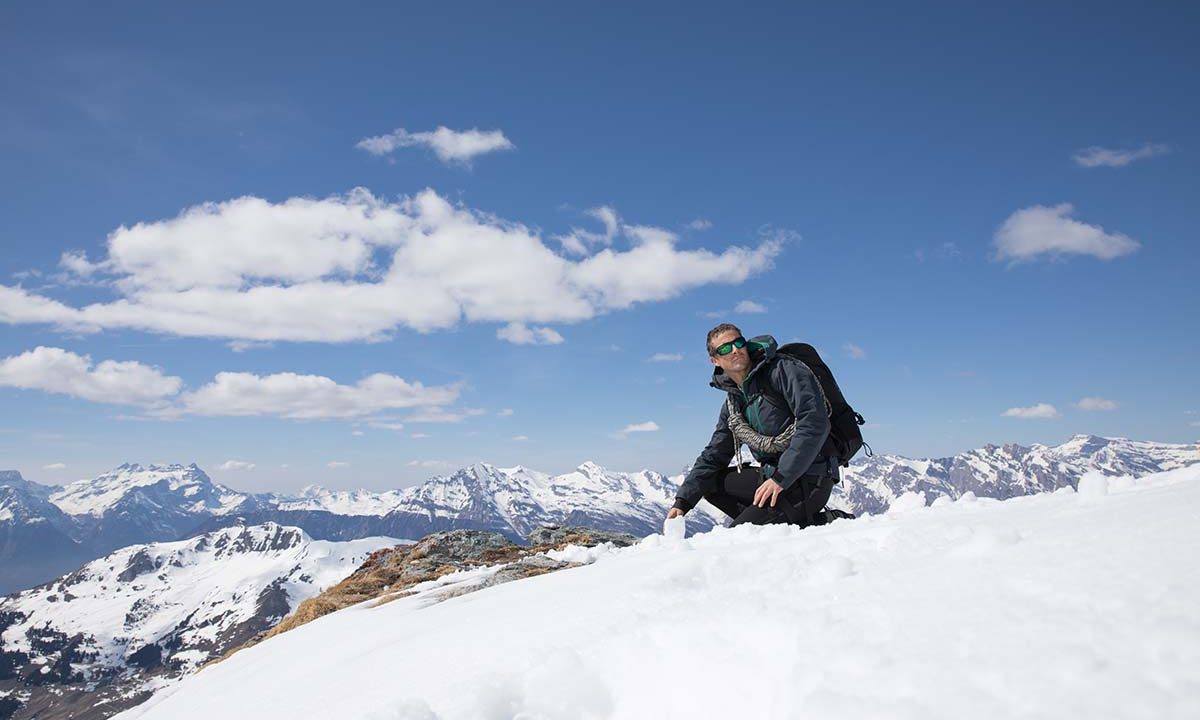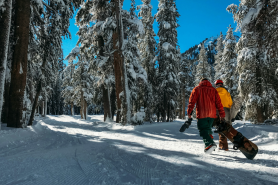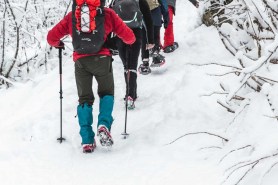

Anyone who uses the mountains or snowy slopes in winter for climbing, skiing, or other snow sports knows how dangerous getting caught in an avalanche would be. Always be prepared, look out for the signs that an area might be avalanche-prone, and learn the safest way to cross an avalanche-prone slope.
Videos by Outdoors with Bear Grylls
When you are in a snowy mountain area or the backcountry, really anywhere away from groomed resort slopes, you should always carry three essential pieces of kit—a probe, an avalanche transceiver, and an avalanche shovel.
You should also keep these four tips in mind. Here’s Bear Grylls’s advice for surviving an avalanche.
TIP 1: Act Fast
Bear Grylls has spent a lot of time on snowy mountain slopes, and he says if you do get caught in an avalanche, you need to respond very quickly.
“In general, avalanches start in slow motion. It might be thundering and fast by the time it reaches the bottom of a slope, but the ground will move extremely slowly to start with. If this happens, you need to act fast. You have a matter of seconds to get above the line where the avalanche starts,” Bear says in his book How to Stay Alive.
Bear says if you are near a ridge, you must try to get to the other side of the ridge. If you can’t get to the ridge and you are being caught in the start of the avalanche, you need to get to the edges before the snow gathers speed.
“If you can, head for hard cover like a big rock. This will act as protection from the momentum of the avalanche above you,” says Bear.
TIP 2: ‘Swim’ Above the Snow
If you can’t escape the avalanche and you are caught in the snow as it rushes down the mountain, the first thing you need to do is keep your head above the snow and “swim” with your arms and legs, like you would in water.
The best way to do this is to be on your back with your face pointing upward. You are essentially trying to swim “up” the slope to counteract the momentum of the fast-moving snow.
TIP 3: Create an Air Pocket
Being “inside” the avalanche will disorient you, and you might end up buried in a few meters of snow. It will be dark, and nobody will be able to hear you screaming. You will also be short on oxygen.
If you have a transceiver, help may already be on its way. However, this is when you need to work fast to preserve your oxygen, before the snow hardens. Bear’s advice is to create a pocket of air around your head, so that you have room to breathe. Take a big breath in—this will expand your chest and make some space in the snow before it hardens.
Next, you need to get to the surface. You will not know which way is up, so, if you can, pee. The fluid will follow gravity, so go in the opposite direction of the pee.
TIP 4: Dig Direction Depends on the Situation
Bear says that if the person is less than a meter below the surface of the snow, it’s best to dig straight down to reach them as quickly as possible.
“If it’s more than [a meter], you’ll get to them quicker if you go in from lower down the face,” he says. “Move down the slope—about one and a half times the distance they are buried. Now start digging.”
If you are digging someone else out from an avalanche, remember that the first 15 minutes are crucial. In fact, rescue during the first 15 minutes offers the highest chances of survival.









